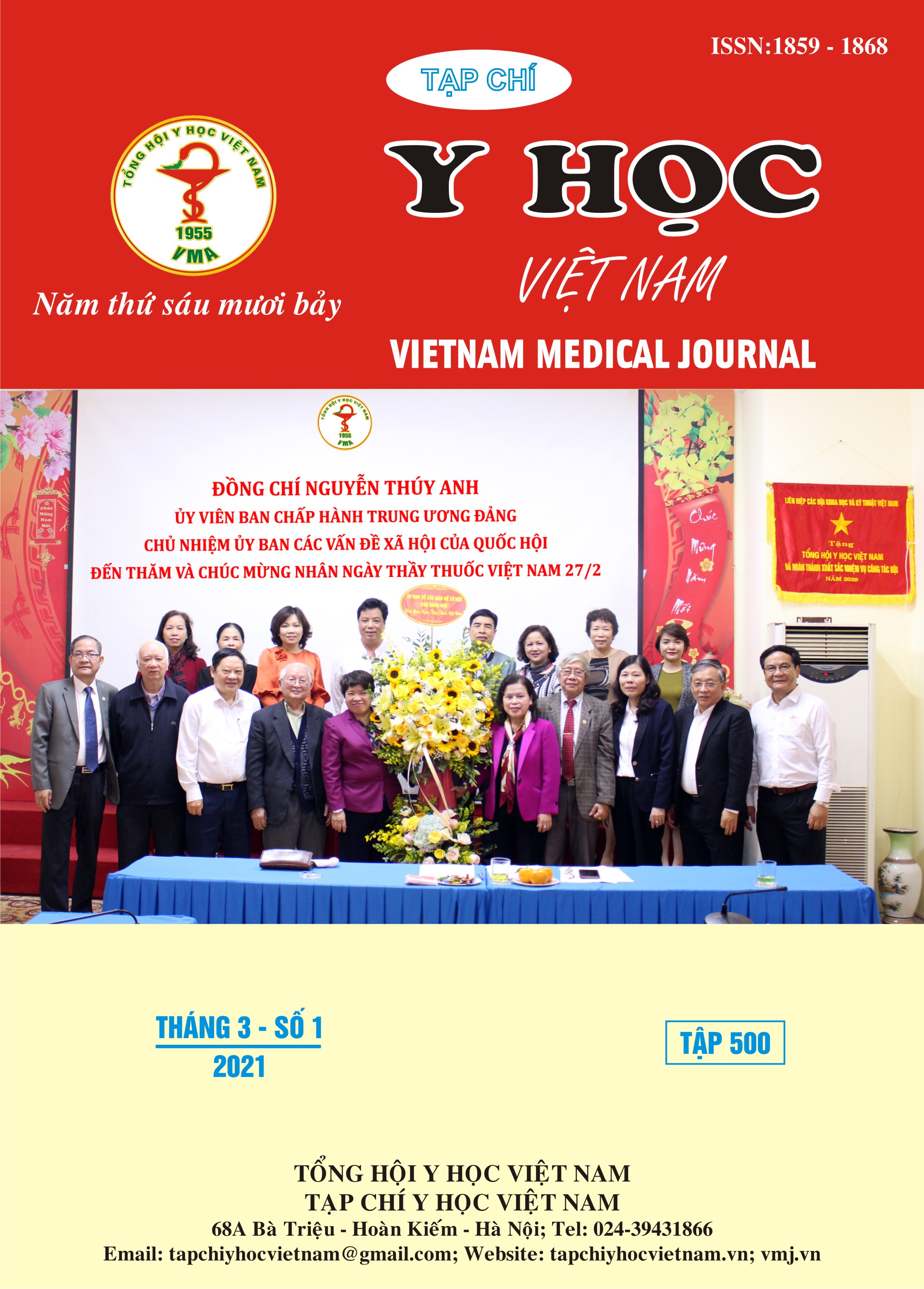HIỆU QUẢ THẢI SẮT Ở TRẺ EM MẮC BETA-THALASSEMIA TẠI BỆNH VIỆN SẢN NHI AN GIANG
Nội dung chính của bài viết
Tóm tắt
Mục tiêu: Đánh giá hiệu quả của liệu pháp thải sắt bằng deferoxamine (DFO) so với deferiprone (DFP) ở bệnh nhân mắc beta-thalassemia. Đối tượng và phương pháp: Nghiên cứu đoàn hệ gồm 44 bệnh nhân từ 6-15 tuổi mắc beta-thalassemia thể nặng, 17 bệnh nhân thải sắt bằng DFO và 27 bệnh nhân thải sắt bẳng DFP uống. DFO được tiêm dưới da với tổng liều hàng ngày là 25-35 mg/kg trong 3-4 ngày mỗi tuần. DFP với liều là 75 mg/kg/ ngày, uống trong 6 ngày mỗi tuần. Hiệu quả của điều trị được đánh giá bằng đo nồng độ ferritin và men gan (AST, ALT) trong huyết thanh sau 6 và 12 tháng điều trị. Kết quả: Trong số 44 bệnh nhân, 17 bệnh nhân tiêm truyền DFO có kết quả tốt. Sau 12 tháng điều trị, mức ferritin huyết thanh trung vị giảm từ 4362 xuống 3022 ng/mL (p = 0,024) và AST/ ALT trung vị giảm từ 88/77 U/L xuống 54/56 U/L (p < 0,001 ). Trong nhóm 27 bệnh nhân uống DFP, chúng tôi nhận thấy DFP không có hiệu quả trong việc thải sắt, nồng độ ferritin tăng từ 4417 lên 4882 ng/mL (p= 0,825) và men gan (AST / ALT) cũng không giảm sau 12 tháng điều trị (p> 0,05). Kết luận: Thải sắt bằng tiêm truyền deferoxamine làm giảm đáng kể ferritin huyết thanh và men gan. Deferiprone đường uống không có hiệu quả thải sắt và giảm men gan ở trẻ em mắc beta-thalassemia thể nặng.
Chi tiết bài viết
Từ khóa
Thalassemia, thải sắt, deferoxamine, defeprirone
Tài liệu tham khảo
2. Lâm Thị Mỹ (2009) Website BV Nhi Đồng I: http://www.nhidong.org.vn/ Default.aspx
3. Rund D. and Rachmilewitz E. (2000) New trends in the treatment of b-thalassemia. Critical Rewiews in Oncology:Hematology 33:105– 118
4. Olivieri NF, Brittenham GM. (1997) Iron-chelating therapy and the treatment of thalassemia. Blood. 1;89(3):739-61.
5. Modell B, Khan M, Darlison M. (2000) Survival in beta-thalassaemia major in the UK: data from the UK Thalassaemia Register. Lancet. 10;355(9220):2051-2.
6. Jamuar SS, Lai AH. (2012) Safety and efficacy of iron chelation therapy with deferiprone in patients with transfusion-dependent thalassemia. Ther Adv Hematol. 3(5):299-307.
7. Botzenhardt S, Felisi M, Bonifazi D, et al. (2018) Long-term safety of deferiprone treatment in children from the Mediterranean region with beta-thalassemia major: the DEEP-3 multi-center observational safety study. Haematologica. 103(1):e1-e4.
8. Mourad FH, Hoffbrand AV, Sheikh-Taha M, et al. (2003) Comparison between desferrioxamine and combined therapy with desferrioxamine and deferiprone in iron overloaded thalassaemia patients. Br J Haematol. 121(1):187-9.
9. Waheed N, Ali S, Butt MA. (2014) Comparison of deferiprone and deferrioxamine for the treatment of transfusional iron overload in children with beta thalassemia major. J Ayub Med Coll Abbottabad. 26(3):297-300.


